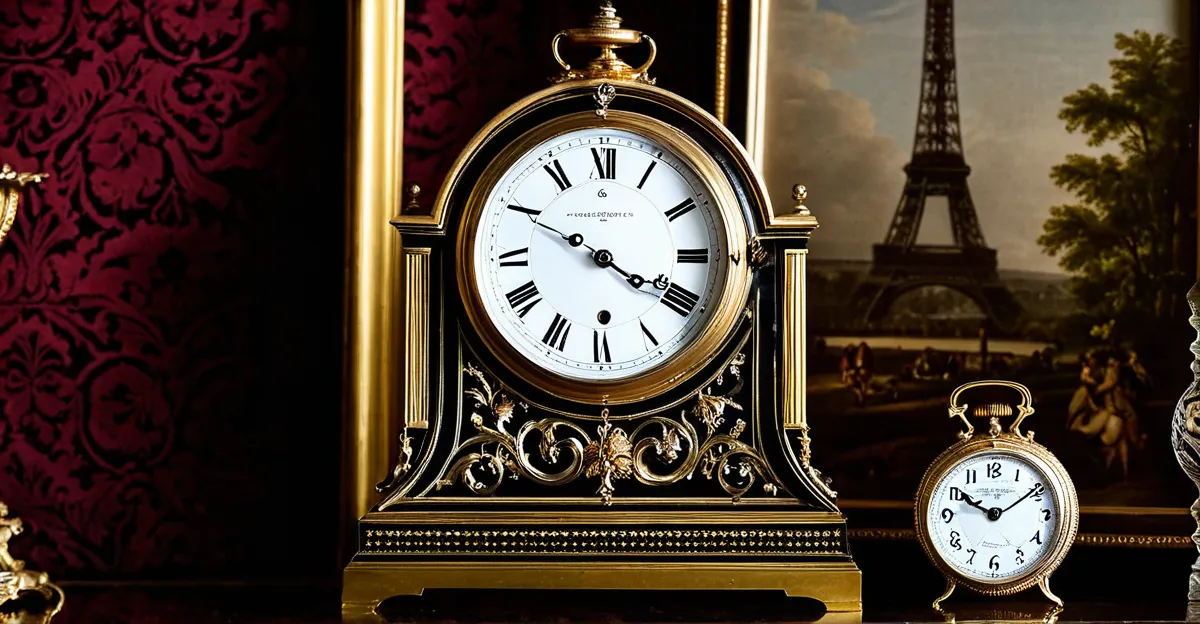Nineteenth-century French clocks blend masterful craftsmanship with rich historical styles, from elegant Rococo curves to refined Neoclassical lines. These timepieces reveal centuries of artistry and innovation, making them prized by collectors and enthusiasts alike. Understanding their origins, makers, and distinguishing features enhances appreciation and aids informed decisions when buying, selling, or restoring these exquisite antiques.
Understanding 19th-Century Antique French Clocks: History, Types, and Market Insights
Among the most sought-after treasures in horology, 19th century french clocks represent a significant chapter in European decorative arts. Their variety, artistry, and technical advancement reflect both the evolution of taste and the social ambitions of a rapidly changing 1800s France. From the Empire period’s neoclassical grandeur to the Restoration’s refined ornamentation and the innovative Belle Époque, each era introduced distinct features visible in materials, motifs, and craftsmanship.
In parallel : Revamp your uk utility room: the ultimate guide to designing a chic and functional space
Collectors frequently identify antique mantel timepieces, vintage French carriage clocks, and classic wall clocks by their signature silhouettes and mechanical ingenuity. French Empire style mantel clocks often showcase heavy bronze mounts, mythological symbolism, and marble bases, while carriage clocks stand out as portable, finely chiseled travel pieces adorned with enamel. Not to be overlooked, French longcase and wall clocks—sometimes overlooked internationally—boast elegant woodwork and decorative flourishes suited to grand residences.
The influence of historical French clockmakers like Le Roy et Fils, Mottheau et Fils, and Jean-Simon Deverberie remains visible in many pieces from this period, bridging artistic vision and horological precision. Today, these clocks carry both aesthetic and investment value, with rarity, condition, and provenance shaping their desirability within the French antique clock collectors’ market.
Also to see : Crafting elegance: handcrafted ceramic pendant lights
Identifying, Collecting, and Appraising Antique French Clocks
Methods for identifying genuine French clocks and signatures
Precision in identifying authentic French clocks relies on recognizing unique features and maker signatures. Look first for visible engravings or stamped marks, which can appear on the movement, dial, or case. Renowned historical French clockmakers such as Jean-Simon Deverberie or Pierre-Philippe Thomire typically placed hallmarks or scripted initials—these signatures strongly indicate authenticity. Examine numbering styles, decorative engravings, and craftsmanship quality, as 19th-century pieces often display meticulous detail and balanced proportions.
Evaluating clock materials, finishes, and conditions
French clocks are crafted from a variety of materials and finishes: expect ormolu (gilt bronze), colored marble (notably black or red), fine porcelain, and detailed enamel. Ormolu decoration should have a rich gold tone, not brassy or thin. For porcelain dials, inspect for vivid painting and even glazing; cracks or major wear may affect both value and appeal. Carriage and mantel clocks often feature intricate, visible mechanisms behind beveled glass panels. Always assess condition—check movement operation, dial clarity, and the stability of marble bases or columns.
Restoration and maintenance tips for sustaining value and function
Proper restoration and maintenance are essential. Maintain patina where possible; aggressive polishing or over-restoration can reduce a clock’s worth. Address mechanical concerns by consulting expert horologists—replacing missing or broken parts with original-style components sustains both value and reliability. Regular gentle cleaning and controlled humidity preserve both finish and movement function, ensuring each antique remains a prized collector’s item.
Buying, Selling, and Navigating the Antique French Clock Market
Leading sources and marketplaces
To locate antique French clocks for sale in the UK, specialist shops such as Arundel Clocks and Dragon-Antiques.com are primary destinations, each maintaining significant inventories from the 18th and 19th centuries. Auctions and online antiques marketplaces provide further opportunities, including daily updated catalogues that reflect changing price ranges and new stock. Platforms catering to every level, from established collectors to newcomers, allow for advanced filtering by maker, style, or era, helping buyers easily identify unique pieces—including French clocks with original pendulums or rare bell-striking mechanisms.
Price ranges, appraisals, and value
Prices for these timepieces span from about £375 to nearly £3,750 in 2025, depending on the maker’s reputation, the presence of original components, and decorative elements like marble or gilt bronze. Comprehensive appraisal resources are essential for distinguishing differential pricing—acknowledging the nuances between, for instance, a French Empire mantel clock and a Neoclassical wall clock. Valuation is influenced by provenance, mechanical integrity, and the status of the maker, such as Le Roy et fils or Maison Mottheau et fils.
Tips for buyers and sellers
- Authenticate: Inspect clockmaker signatures and movement details to ensure authenticity.
- Negotiate confidently: Leverage current market data and pricing trends.
- Export/import considerations: Check regulations for international transactions, especially for clocks with protected materials.
- Market awareness: Monitor collecting trends and subscribe to new arrival alerts, maximizing acquisition timing and resale potential.





